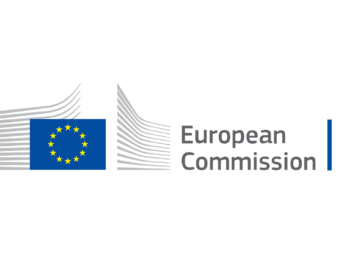The Scheldt Battery: innovative energy storage on a shared connection
The Scheldt Battery is live! Emmett Green realizes innovative energy storage on a shared grid connection with a polder pumping station and tidal culvert of the Scheldestromen Water Board.
More efficient use of one grid connection
Energy transition is all about smarter use of scarce capacity. TenneT and Stedin indicate that the electricity grid is also overcrowded in Zeeland. Grid connections are scarce and expansion of the electricity grid is taking a long time, while many existing connections are only partially utilized. At the same time, there is a growing need for flexible energy storage, grid balancing and congestion management.
The Scheldebatterij is a large-scale 1 MW and 2.3 MWh battery storage system in Zeeland, strategically placed on the site of a polder pumping station managed by the Scheldestromen Water Board. The project shows that much can be possible within an existing grid connection, as the energy storage system shares it with a polder pumping station and a tidal culvert operated by the Water Board. Because the pumping station mainly activates when the water level is too high, there is often space left over on the grid connection. The Scheldt Battery can use the grid connection at these times. Emmett Green applied for the permit, realized the financing and oversaw the procurement of the system.
“There is often a lot of opportunity to use existing grid connections more efficiently by sharing with multiple assets.”
This battery system delivers with balancing services important flexibility to the power grid and combats grid congestion with redispatch. In addition, under certain circumstances, the Scheldt Battery could assume a role as an additional emergency power supply for the polder pumping station.
Water management and energy storage: a unique combination
The Water Board has a large grid connection for the polder pumping station, which allows for the instantaneous purchase of a large amount of electricity at any time. This is necessary for when the pumping station has to switch on at full power. The pumping station's job: to pump water away when the water level is too high to prevent flooding and wet feet.
Security for the pumping station, flexibility for the battery
To maintain the safety of the hinterland and the balance of the ecosystem, the polder pumping station and the tidal culvert are given priority over the Scheldt Battery at all times. The grid connection of the pumping station must be unconditionally available during its operating hours. This means that the battery strategy must always take into account that the pumping station may jump on, and thus the battery must adapt. Emmett Green's Energy Management System uses advanced prediction algorithms to tailor the market strategy precisely to this. In addition, a special mechanical circuit was created by Emmett Green's engineers, allowing the pumping station to override the battery at all times.
“The polder pumping station always has priority, but there is often also space left on the grid connection to deploy the battery.”
The limited and specific operational hours of the pumping stations make the large grid connection essential, but also underutilized outside the winter period. Fortunately, the underutilization of this precious capacity also creates opportunities: By placing an additional asset in the form of an energy storage system behind it, the existing infrastructure is used efficiently and the battery can be actively used for grid balancing.
Technical customization in a complex environment
To make this technically possible, Emmett Green converted the connection in close cooperation with the grid operator. A new purchasing station was erected with separate transformer stations for the pumping station and the battery. This ensures unconditional security of supply for the pumping station, while the battery now also helps balance the grid.
The planning of this project had to take into account the start of the storm season (October 1 to April 1), because work next to dikes and dunes cannot simply be carried out then. Because of its location near the sea, the system is exposed considerably to the salty air, and in order to reduce the impact of this, liquid cooling was chosen instead of air cooling, in consultation with the supplier.
In addition, the cybersecurity requirements of the EMS are very high, and they are carefully safeguarded at all times. Communication between systems takes place exclusively via secure connections, such as VPN tunnels, secure data pipelines and encrypted API endpoints. In addition, Emmett Green works exclusively with suppliers who meet the highest cybersecurity requirements and relevant standards.
“Emmett Green's EMS uses advanced prediction algorithms to optimize battery strategy, taking into account the polder pumping station.”
To provide additional assurance that the battery will never interfere with the pumping station during its operating hours, an additional safety system is provided that can disconnect the battery in case of an emergency. This is provided mechanically so that if the pumping station turns on and the battery does not respond, the physical contact is automatically broken.
Valuable collaboration for a unique project
The Scheldt Battery is the result of an effective collaboration between Emmett Green and Scheldestromen Water Board to jointly realize flexible power that contributes to both grid stability and better utilization of the grid connection.
The combination of technical flexibility and strict safety guarantees makes the Scheldt Battery a unique project. There are many such underutilized connections, and often more is possible than is thought. The concept of smart capacity sharing and multiple market utilization is scalable for many locations.
Are you a manager, government, consultant or developer looking for smart grid congestion and flexibility solutions? Emmett Green is the strategic partner for smart flexible asset integration and smart control with EMS. Contact us to explore the role of smart asset integration for your organization.
Source: Emmett Green
Latest News
 News
News
Compliment of the month: European Commission sees storage capacity grow to 171 GW
November 27, 2025 News
News
Energy Storage NL asks House of Representatives to take concrete steps against grid congestion
November 27, 2025 News
News


